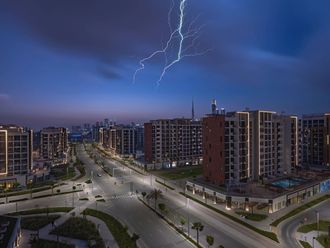Last year ended on something of a high note in respect of the Dubai real estate market, with the rents and prices in select locations resulting in a return of confidence and a rash of major new project launches. As we look to 2013, we are cautiously optimistic, expecting the Dubai market to experience a broader based recovery but certainly not a boom.
The Abu Dhabi market remains 18 to 24 months behind Dubai in its real estate cycle, with most sectors continuing to move in favour of the tenant or occupier. While the government has introduced steps to control development and promote demand, these are not expected to result in any recovery in prices or rentals until 2014 at the earliest.
In summary, 2013 is likely to see different trends in each of the two major markets within the UAE.
While prices and rents may not increase as rapidly as they have in some sectors in 2012 (where prime residential prices increased 19 per cent), the recovery in Dubai’s real estate sector is expected to be more broad-based, spreading out from the relatively small number of top locations and projects that experienced improved performance in 2012.
The greatest danger is the possible return of over-exuberance. We believe this can be prevented and that the market will shift up a gear without overheating. There are two major factors that are likely to act as a natural brake — continued limitations on the availability of finance and the high level of new supply entering some sectors.
The issue of real estate financing has been extremely topical since the announcement by the UAE Central Bank of caps on loan to value ratios for all new mortgages. These regulations have now been placed on hold for six to nine months while the Central Bank undertakes further consultations. In principle, we would support their intent of imposing tighter regulations to curb excess liquidity and improve the long-term stability of the residential market.
The other constraint will be the significant level of new supply scheduled to enter in the next twelve months. Given that the office market is already experiencing high levels of vacancy, this will further increase the choices. Only those projects that offer what tenants are looking for (large floor plates in single ownership in well managed buildings in established locations) are likely to achieve rental growth.
In Abu Dhabi, with a large amount of new supply still in the pipeline and limited current demand from private sector occupiers or investors, rent and price rises are unlikely this year.
The Abu Dhabi government has initiated a number of measures to control supply and stimulate demand in the longer term, but these are unlikely to have a major impact on market conditions in 2013. In addition to the announcement that government employees must live in the emirate to qualify for housing allowances, there have been two further announcements aimed at boosting demand for real estate in Abu Dhabi in the first few weeks of 2013.
Awarding the main construction contract for the Louvre Museum on Sadiyaat Island will help stimulate demand for cultural tourism in Abu Dhabi and the injection of Dh330 billion in infrastructure and other projects will provide a major boost to the emirate’s housing and Al Ain office markets.
The announcement of the merger between Aldar and Sorouh is the latest example of the government’s attempts to consolidate the real estate sector in the emirate. This will assist the market by regulating supply and prioritising projects. While the foundations are being laid for recovery in 2014, most sectors of the Abu Dhabi market are expected to remain tenant favourable in 2013.
Other trends that will impact on the performance of the real estate sector in 2013 include a greater focus on property management (with more attention on balancing the equation between operating costs and service charges) and further progress converting the widespread talk about sustainable buildings into more concrete action.
— The writer is the CEO of Jones Lang LaSalle, Middle East and North Africa












